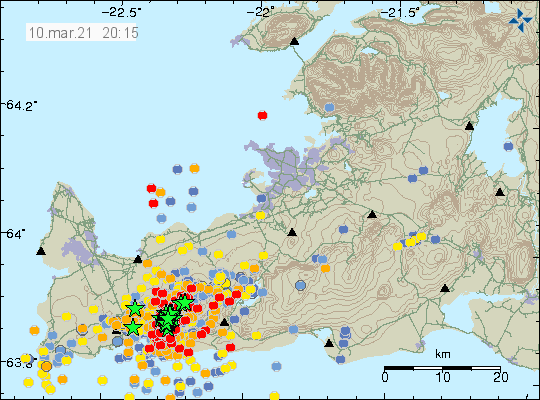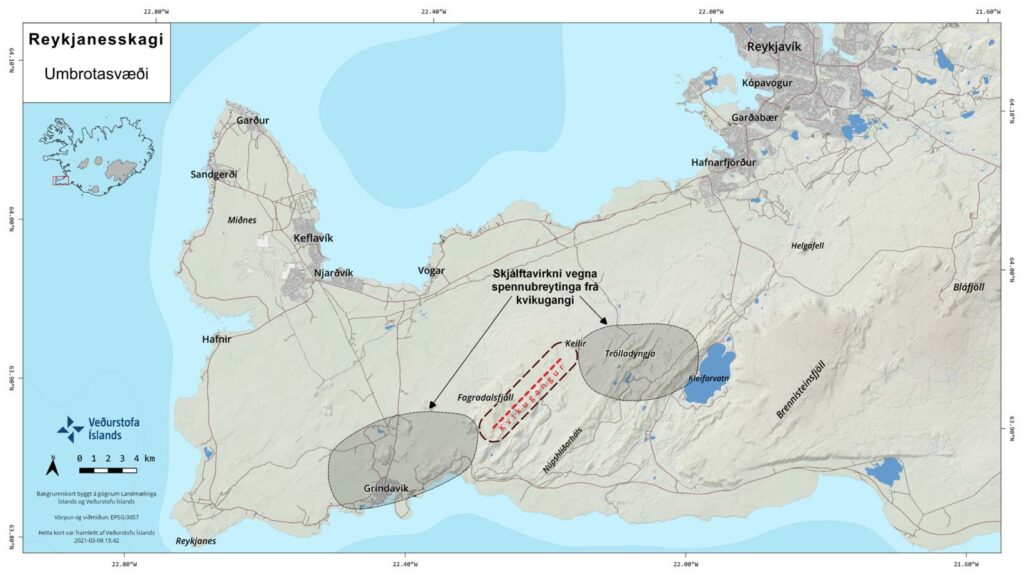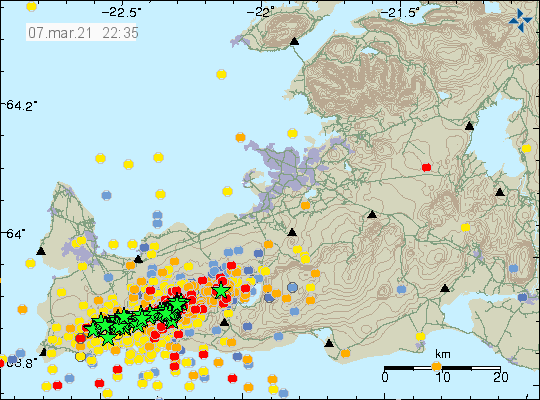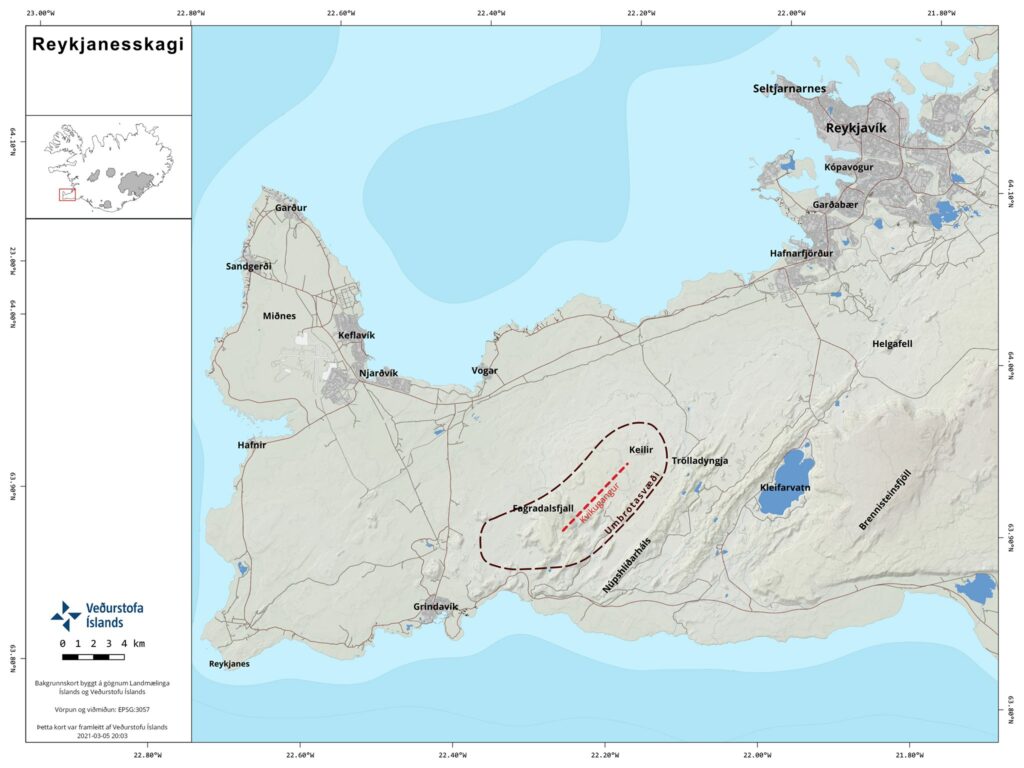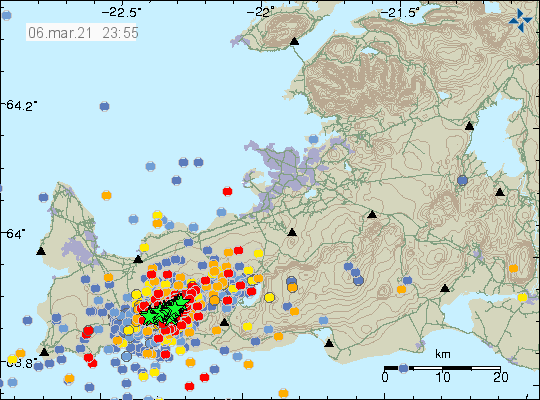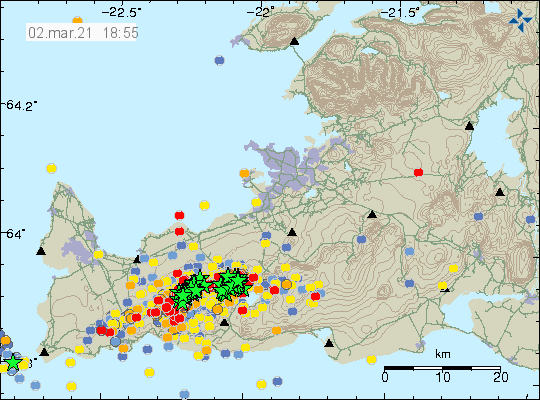This is a short article about the activity in Fagradalsfjall volcano. This article is written on 11-March-2021 at 17:34 UTC.
This morning at 08:53 UTC an earthquake with magnitude of Mw4,5 took place west of Grindavík town. Second earthquake with magnitude of Mw3,2 took place at 09:03 UTC. This earthquakes are not connected to any magma movement in this location. The reason for this earthquake activity is because of the inflation from the Fagradalsfjall volcano dyke. According to new measurements the dyke in Fagradalsfjall volcano is moving around 500 meters every 24 hours. Currently the dyke has moved more south but it was moving south-west yesterday and the days before that. Today (11-March-2021) the dyke has only 2 to 3 km left until it goes under the ocean and a road called Suðurstrandarvegur (road 427). If the magma reaches the ocean and an eruption starts, it is going to be an explosive eruption while the ocean can access the main craters that are erupting. Depending on locations this can go on for weeks and is going to form new islands that might only exist for short time period until the ocean erodes them away.
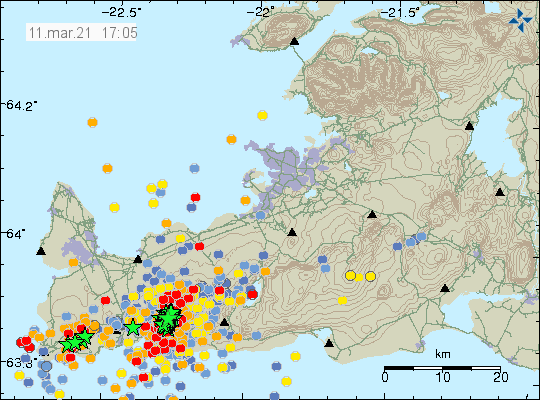
If an eruption happens before the magma dyke reaches the ocean the magma only has 2 to 3 km left until it reaches the ocean and it is now expected if that happens that the lava is going to reach the ocean in 6 to 10 hours and go over Suðurstandarvegur (road 427). Since 24-February-2021 over 34.000 earthquakes have been recorded by Icelandic Met Office in this volcano activity.
Web cameras
Beint vefstreymi af skjálftasvæðinu – Borgarfjall (Rúv.is) New!
Beint vefstreymi af skjálftasvæðinu – Efstaleiti (Rúv.is)
Road camera 1
Road camera 2 (night vision/infrared)
Live from Iceland

